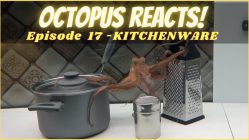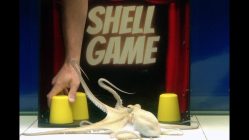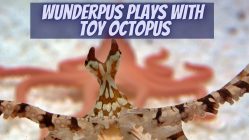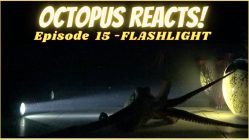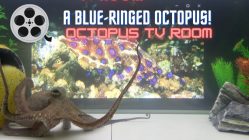
Also known as the Dwarf Octopus or the small-egg Caribbean Pygmy, the Atlantic Pygmy Octopus is often misclassified by some as the smallest octopus species. It was initially discovered and described by the British zoologist Guy Coburn Robson who collected the first female specimen (housed in the collections of the British Museum) in 1929 at St. Thomas, Virgin Islands. It was named in honor of the French naturalist Louis Joubin (1861-1935), a researcher of cephalopods.
The Atlantic Pygmy Octopus bears a lot of morphological resemblances with the species known as octopus mercatoris but they are distinguished from the size of their eggs (the Atlantic Pygmy Octopus lays smaller eggs) and their colors (the Atlantic Pygmy Octopus has a distinctive reddish orange color in contrast to the dark brown to brownish-gray color of the octopus mercatoris). It measures 1.5 to 1.8 inches in length – that’s small, just not small enough to be the smallest.
Its size has rendered it popular as a pet octopus choice and many pygmy octopuses adjust well to life in an aquarium. They prefer warm temperatures and are usually found in the tropical waters of the Caribbean and the Gulf of Mexico, and mainly around Cayman Islands. They suffer greatly in polluted waters and always choose to settle where the waters are clear.
Atlantic Pygmy Octopus Facts
- Scientific Name : Octopus Joubini
- Common Name: Atlantic Pygmy Octopus, Caribbean Pygmy Octopus
- Size: up to 5.5 cm
- Weight: 1 ounce
- Lifespan: 6-12 months
- Found in: Caribbean and the Gulf of Mexico, mainly Cayman islands
- Sub-Order: Incirrina
- Discovered: 1929
- Scientific Name : Octopus Joubini
- Common Name: Atlantic Pygmy Octopus, Caribbean Pygmy Octopus
- Size: up to 5.5 cm
- Weight: 1 ounce
- Lifespan: 6-12 months
- Found in: Caribbean and the Gulf of Mexico, mainly Cayman islands
- Sub-Order: Incirrina
- Discovered: 1929
Its size has rendered it popular as a pet octopus choice and many pygmy octopuses adjust well to life in an aquarium. They suffer greatly in polluted waters and always choose to settle where the waters are clear.
—Hide and Seek—
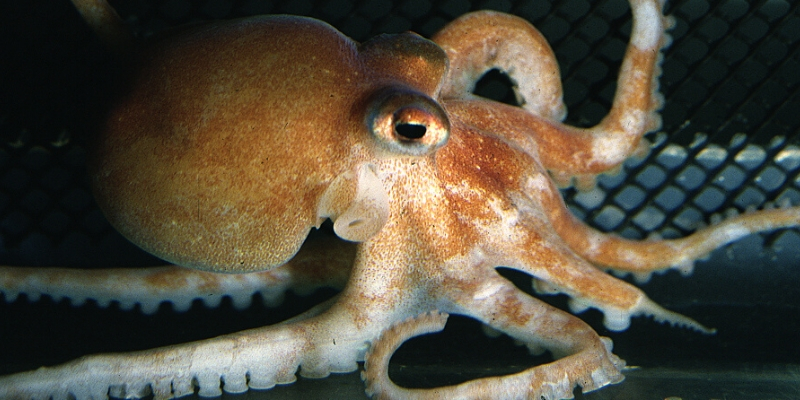
Due to its small size and resourcefulness in hiding, the Atlantic Pygmy Octopus is hard to find. Sometimes they hide into tin cans and bottles and researchers have managed to collect specimens by gathering cans from the ocean floor. The Atlantic Pygmy Octopus is benthic and are generally prefers soft and muddy surfaces around 10 to 15 m deep.
They are often described as playful, strong-sighted and extremely intelligent. They are famous for their problem solving techniques when they are faced with an imperfect habitat environment. They use empty clamshells and small openings to hide and then add sand and gravel to cover the entrance or use their arms to close the shell. Similarly to all other species, the pygmy octopus uses effective camouflage and releases ink from its ink sack to intimidate its attackers.
—Poison—
The Atlantic Pygmy Octopus is carnivorous but as it is so hard to trace in its natural environment, not much is to be said with certainty about its dietary preferences. They feed primarily on small clams and crustaceans by inserting their radula into their prey’s shell and expelling venom to paralyze their victims. A small pygmy octopus can kill a crab of equal weight: Only half a minute will pass until its poisonous bite renders the crab unconscious.
It might be a tiny fellow, but a deadly one nevertheless!
—The Small Egg Octopus—
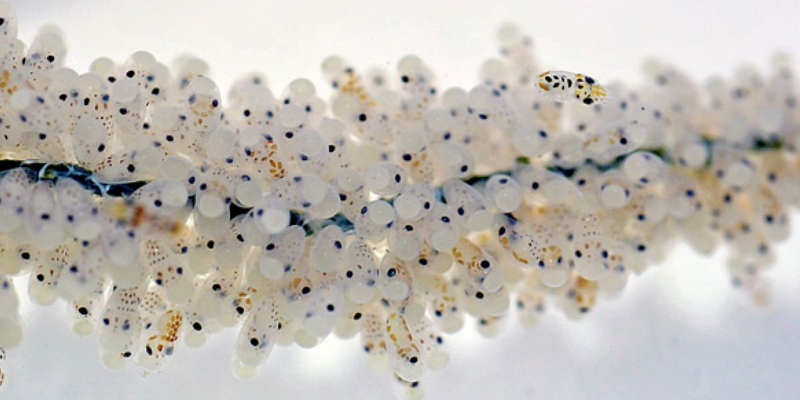
The Pygmy Octopus starts mating at around six months old and the mating season is during March and April. Their size when they reach sexual maturity is still quite small but most adults are at least 3 cm long. Researchers who observed females of the species in aquarium noted that they laid from as few as 136 to as many as 2516 eggs in a period of four weeks. The eggs fully develop after 35 days. The planktonic hatchlings weigh only 0.04 grams, have 2.0–2.5 mm mantle length and only a very small percentage (even as low as 10%) will survive for longer than a week. The eggs of the Atlantic Pygmy Octopus are one of its distinguishing characteristics due to their very small size which has led it to be known also as the ”small egg” octopus. The egg size has enabled researches to differentiate between the Atlantic Pygmy Octopus and the Caribbean Dwarf Octopus. The size of a fully developed egg of the Atlantic Pygmy Octopus can range from 2.3 to 4.8 mm. The matured female is slightly larger than the male in size but the male usually weights more.
—A Social Octopus—

Even though the Atlantic Pygmy Octopus, as it is typical of all species, prefers to live in isolation, it is more social than other species in the sense that they are less territorial, especially with other octopuses of the same species.
—The Pygmy Octopus in Danger—
One of the biggest threats that the Atlantic Pygmy Octopus faces is the organic pollution of water. The seasonal increase in the algal constituent of plankton can exterminate entire populations of the species.
—The Pygmy Octopus as a Pet—
If your apartment is too small even for you, then the Atlantic Pygmy Octopus is the ideal species for you. Being so small means that it is not only very cute but also low maintenance as far as tank requirements are concerned. Even a tank as small as 10 gallons will do, though preferably you should choose a 30 gallon tank if you have enough space.



